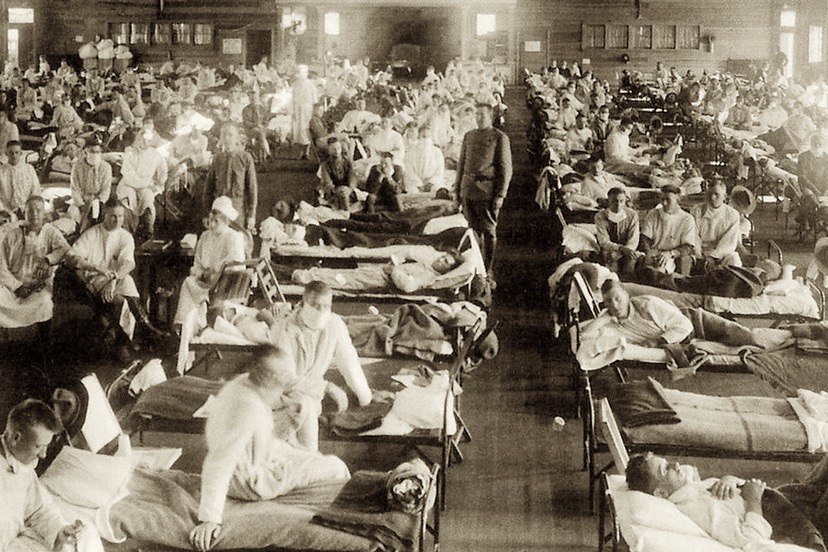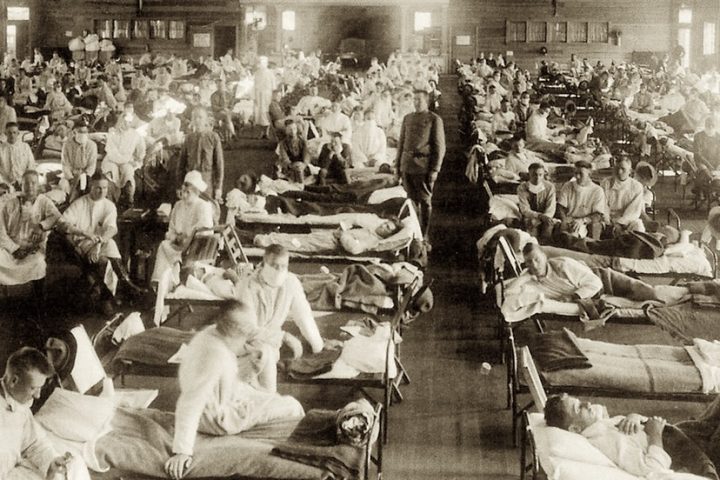By Baird Banner
A virus is a strange and unlovely entity… “a piece of nucleic acid surrounded by bad news,” according to Nobel laureate Peter Medawar.
“Smaller and simpler than bacteria, viruses aren’t themselves alive. About five thousand types of virus are known, and between them they afflict us with many hundreds of diseases, ranging from the flu and common cold to those that are most invidious to human well-being: smallpox, rabies, yellow fever, Ebola, polio, and the human immunodeficiency virus, the source of AIDS.”
“Viruses hijack the genetic material of a living cell and using it to produce more virus. Not being living organisms themselves, they are very simple. Many, including HIV, have ten genes or fewer, whereas even the simplest bacteria require several thousand. They are also very tiny, much too small to be seen with a conventional microscope. It wasn’t until 1943 and the invention of the electron microscope that science got its first look at them.”
“Almost 80 percent of American casualties in the First World War came not from enemy fire, but from a virus. (This begs the question — why isn’t pandemic preparedness on a par with military preparedness?) From the autumn of 1918 and spring of the following year, 548,452 people died of the flu in America. The global toll was not less than 20 million and probably more like 50 million of the 1.7 billion people alive on the planet in 1918.”
In 2020, the world population is 7.8 billion. Our increased population density, travel habits, and a higher rate of personal pre-existing conditions like diabetes, hypertension and obesity can give viral infections additional impact.
Viruses that infect humans come from animals about 75% of the time. As our population has expanded into the once isolated habitats of many animals and they now seek food in areas that are also inhabited by humans. Bats, infamous as a likely COVID incubator, are more frequently feeding in farms, infecting farm animals, which then infect humans. Humans process 80 billion land animals a year to sell for food. 90% of US meat is farm raised. These facilities are hyper-densely populated and spread viruses and other bacterial pathogens very efficiently. Our present world is living in a way to make pandemics more likely.
Humans do not control viruses. As an unwilling host we have to coexist with them at best, and can face devastating challenges at worst. The yearly flu on average kills well below 0.1% of the reported cases. COVID is lethal in 1.5% to 3% of reported cases — 15 to 30 times more lethal and more contagious than the more common influenza. With only 3 months of actively confronting and assessing COVID, we are only scratching the surface of the data we need to get an upper hand. Many people still think that only people with red eyes and bad coughs are contagious, but the way COVID spreads is deceptive. People who do not have any symptoms host and spread the virus in far greater numbers than people with symptoms. There is no way to know if the person near you has the virus at this point in time.
`
Countries stand in stark contrast to each other in their handling of the virus, with deaths from COVID being one of the major metrics we use to measure infection rates. Reported deaths in the US are above 80,000… reported deaths in China (with a four times larger population than the US), 4,600… deaths reported in the Republic of Singapore, 2. Current US testing policy is largely confined to symptomatic people. We are stuck testing infection events that are 14 days in the past. We need to test The Present to take the next step.
“Reopening” — as important as it is with the dire economic effects of the shutdown — translates as “the government of the country whose public health policies have allowed the largest COVID-19 mass infection and the highest death rate in the world is now assuring you it knows how to ‘reopen’ our country.” Asking Americans for a patriotic ‘sacrifice’ — as Chris Christie did when comparing the pandemic fatalities to deaths in WWII — is a grim public health policy. Federal and State governments are giving no surveillance or intelligence support to the ‘troops’ they are ordering into harm’s way.
Our States, and ultimately small and large business, are being forced to create, to finance (and to compete with each other for resources), to enforce and to accept the legal and moral dilemmas of ‘reopening’. The Executive branch of government is berating the CDC for not giving acceptable answers in press conferences. Press criticism of the COVID response has prompted state and federal officials to take self-defensive stances, to distort and even refuse to release the scope of infection in large businesses and nursing homes.
Withholding of information is happening at a time when the people restarting the economy need accurate data, as they work to get beyond social distancing as our only effective tool against COVID. How much personal risk will Americans tolerate to return to work, watch a movie, or go to eat in a restaurant if they have no idea of who and how many of the people around them are infected? To confidently have a resumption of normal life, Main Street will need the promised development of widely available tests that a lay person can give to get results within 15 minutes. Testing that allows you to get infected before you get its results is a useless tool for widespread reopening our society.
With good site testing, our split society could try to find the will to require people who test positive to cooperate with a ‘track and isolate’ strategy. There are going to be a lot of wide eyed, stressed, and abused greeters if they mention any protection requirements as customers walk in the door. In today’s political climate, any imposing of rules will piss a lot of people off.
A possible economic opportunity in this situation is that businesses, cities, and states that achieve reliable testing would be demonstrably safe and then prosper as medical/tourist destinations. Gated communities with entry and exit infection tests? COVID-free dating services?
Facts and condensed excerpts from
‘A Short History of Nearly Everything’ by Bill Bryston: the nature of viruses
Fareed Zacaria broadcast: the food industry and viruses
Our World in Data ourworldindata.org
Baird Banner is a musician (drums), AV designer and installer, audio recording studio engineer and owner, father, husband and book hound.


